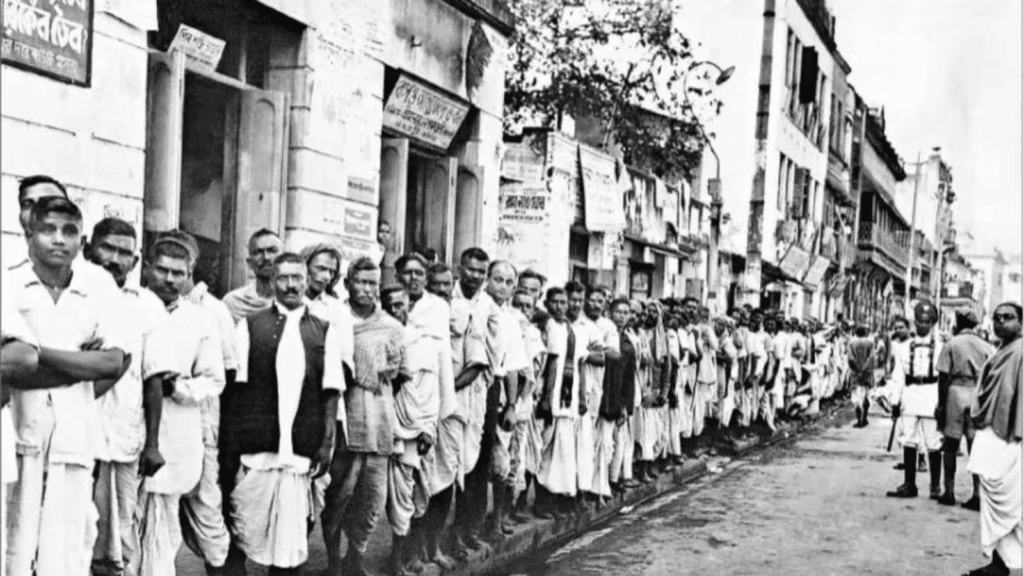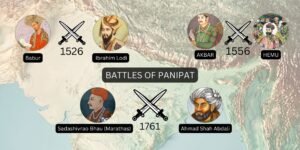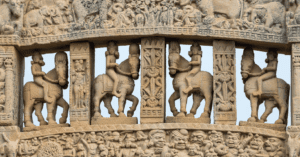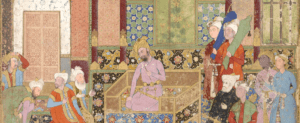
A Pioneering Democratic Triumph
The year 1951 marked a pivotal moment in the history of India, as the nation took its first steps toward democracy following centuries of colonial rule. India’s first general election, conducted over several months from 1951 to 1952, was a monumental event that would shape the course of the nation’s political landscape for decades to come. This article delves into the depths of this historic election, exploring the key players, the participating parties, and the profound significance of this electoral endeavor.
The Historical Context
To truly understand the significance of India’s first general election, we must first delve into the historical context. India had gained independence from British colonial rule in 1947, and in 1950, it adopted its own constitution, becoming a sovereign republic. However, the country had a daunting task ahead – the establishment of a democratic system that would represent the diversity of its people. Universal adult suffrage was the cornerstone of this new democratic order, granting voting rights to all citizens regardless of caste, creed, religion, or gender.
The Timing of the Election
The first general election of India was conducted in multiple phases from October 25, 1951, to February 21, 1952. This extended timeline was necessary due to the enormous logistical challenges posed by the vastness of the country and its diverse population. Organizing an election of this magnitude was a monumental task, especially considering the limited infrastructure and resources available at the time.
The Participation of Political Parties
A crucial aspect of any democratic election is the participation of political parties that represent the interests and aspirations of the electorate. In India’s inaugural general election, a diverse array of political parties and independent candidates entered the fray.
- Indian National Congress: The Indian National Congress (INC), led by Jawaharlal Nehru, was the dominant political force in the election. Having played a pivotal role in the struggle for independence, the INC enjoyed widespread support. Nehru, who would later become India’s first Prime Minister, was a charismatic leader who embodied the hopes and dreams of a newly independent nation.
- All India Scheduled Castes Federation: Led by Dr. B.R. Ambedkar, the All India Scheduled Castes Federation focused on the concerns of marginalized communities, particularly the Scheduled Castes (formerly known as Untouchables). Ambedkar, one of the chief architects of the Indian Constitution, championed social justice and equality.
- Communist Party of India: The Communist Party of India (CPI) was another significant player in the election. It advocated for a socialist agenda and gained support in various regions, particularly in Kerala and West Bengal.
- Bharatiya Jana Sangh: The Bharatiya Jana Sangh, the precursor to the Bharatiya Janata Party (BJP), made its debut in this election. Rooted in the ideology of Hindutva, it represented a conservative Hindu nationalist perspective.
- Socialist Parties: Various socialist parties, such as the Praja Socialist Party and the Socialist Party, contested the election, offering alternative visions for India’s development and social welfare.
- Regional Parties: Several regional parties and leaders also participated, reflecting the linguistic and cultural diversity of India. These parties played a crucial role in representing the specific interests of their respective regions.
The Results and the Emergence of a Prime Minister
When the results of the first general election were tallied, the Indian National Congress emerged as the clear winner. The INC secured a significant majority, winning 364 out of 489 seats in the Lok Sabha, the lower house of India’s Parliament. This resounding victory cemented Jawaharlal Nehru’s position as India’s first Prime Minister.
The significance of this outcome cannot be overstated. It marked the peaceful transition of power from colonial rule to a democratically elected government. It also demonstrated the Indian people’s commitment to democratic principles, secularism, and pluralism, defying skeptics who doubted India’s ability to function as a unified democratic nation.
The Electoral Process and Challenges
The conduct of India’s first general election was an immense undertaking. The sheer size of the electorate posed a formidable challenge. Approximately 176 million people were eligible to vote, making it the largest democratic exercise in the world at the time. Voter turnout stood at around 45.7%, reflecting the enthusiasm of a population that was still grappling with the novelty of participating in free and fair elections.
Logistics and infrastructure were major hurdles. India’s vast and varied geography meant that election officials had to navigate dense forests, remote villages, and challenging terrain to reach every eligible voter. The use of technology was limited, and manual processes dominated. Nonetheless, the election was a testament to the dedication and determination of election officials and volunteers who worked tirelessly to ensure its success.
The Role of Women in the Election
Another noteworthy aspect of India’s first general election was the participation of women. Indian women had fought for suffrage alongside their male counterparts during the independence movement, and their contributions were duly recognized. Universal adult suffrage meant that women had an equal voice in shaping the nation’s future.
Several women leaders emerged during this period, including Vijaya Lakshmi Pandit, who became India’s first female ambassador to the United Nations, and Rajkumari Amrit Kaur, who held the position of Minister of Health in Nehru’s cabinet. The participation of women in politics was a crucial step toward gender equality in India.
The International Perspective
India’s first general election garnered attention on the international stage. The successful conduct of a democratic election in a newly independent, diverse, and populous nation was seen as a testament to the strength of democracy. It inspired other newly independent nations and reaffirmed India’s commitment to its role as a leader in the Non-Aligned Movement, which sought to maintain independence from the influence of the superpowers during the Cold War.
The Election’s Legacy

The legacy of India’s first general election extends far beyond its immediate results. It set the stage for the development of a robust democratic system that has endured for over seven decades. Some key aspects of its legacy include:
- Democratic Traditions: The election laid the foundation for democratic traditions in India. Regular elections have become a hallmark of Indian democracy, reinforcing the idea of government by the people, for the people.
- Secularism: The election demonstrated India’s commitment to secularism by electing a government that represented the diversity of its population. Secularism remains a fundamental principle of Indian governance.
- Unity in Diversity: The election showcased India’s ability to manage its linguistic, cultural, and religious diversity within a democratic framework. It reinforced the idea of India as a “unity in diversity.”
- Peaceful Transition of Power: The peaceful transition from colonial rule to democratic governance set a precedent for future generations and underscored the strength of Indian democracy.
- Empowerment of Marginalized Communities: The election highlighted the importance of addressing the concerns of marginalized communities, a principle enshrined in the Indian Constitution.
- Women’s Empowerment: The inclusion of women in the electoral process marked a significant step toward gender equality.
Conclusion
India’s first general election in 1951-1952 was a historic milestone in the nation’s journey toward democracy. It exemplified the spirit of inclusivity and diversity that continues to define India’s democratic fabric. The participation of various political parties, the emergence of






